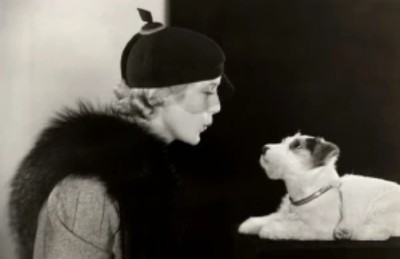[ad_1]
“Puppy-dog eyes didn’t just evolve for us, in domestic dogs,” says comparative anatomist Heather Smith. Her team’s work has thrown a 2019 finding1 that the muscles in dogs’ eyebrows evolved to communicate with humans in the doghouse by showing that African wild dogs also have the muscles to make the infamous pleading expression. The study was published on 10 April in The Anatomical Record2.
Now, one of the researchers who described the evolution of puppy-dog eyebrow muscles is considering what the African dog discovery means for canine evolution. “It opens a door to thinking about where dogs come from, and what they are,” says Anne Burrows, a biological anthropologist at the Duquesne University in Pittsburgh, Pennsylvania, and author of the earlier paper.
Evolution of canine eyebrows
The 2019 study garnered headlines around the world when it found that the two muscles responsible for creating the sad–sweet puppy-dog stare are pronounced in several domestic breeds (Canis familiaris), but almost absent in wolves (Canis lupus).
The science of puppy dog eyes
If the social dynamic between humans and dogs drove eyebrow evolution, Smith wondered whether the highly social African wild dog might also have expressive brows.
African wild dogs (Lycaon pictus) are native to sub-Saharan Africa. Between 1997 and 2012, their numbers dropped by half in some areas. With only 8,000 or so remaining in the wild, studying them is difficult but crucial for conservation efforts.
Smith, who is based at Midwestern University in Glendale, Arizona, and her colleagues dissected a recently deceased African wild dog from Phoenix Zoo. They found that both the levator anguli oculi medalis (LAOM) and the retractor anguli oculi lateralis (RAOL) muscles, credited with creating the puppy-dog expression, were similar in size to those of domestic dog breeds.
“We could see distinct fibres that are very prominent, very robust,” says Smith. Although the researchers only looked at one African wild dog, Smith says it’s unlikely that such a large and well-developed muscle would be present in one animal and not others.
A communication strategy
The team proposes that the gregarious African wild dogs evolved these muscles to communicate with each other. They use a range of vocal cues to organize hunts and share resources, but until now, non-vocal strategies haven’t been studied.
Burrows speculates that more dog species might have muscles for facial expression than the researchers realized when they compared wolves and domestic dogs. “I wonder if these muscles have been around for a really long time and wolves are the ones that lost them.”
Muhammad Spocter, an anatomist at Des Moines University in West Des Moines, Iowa, says the study is exciting, but cautions against making assumptions about wild dog behaviour based on their physical structure. “Just because the anatomy is there, is it being used?” says Spocter. “And how is it being used?”
[ad_2]
Source Article Link


